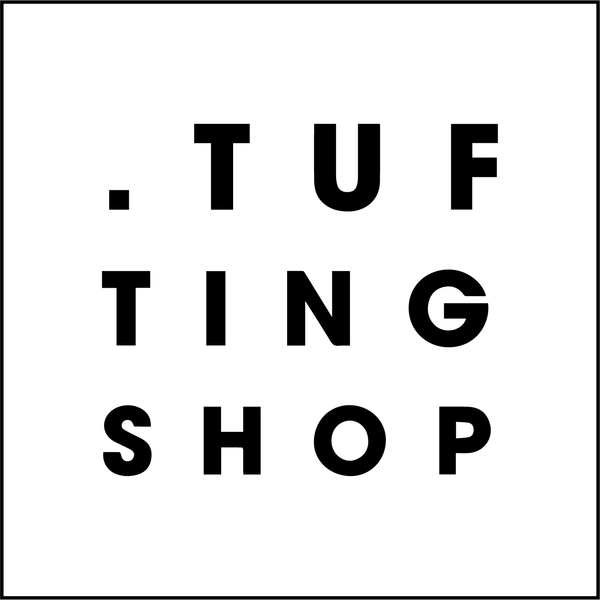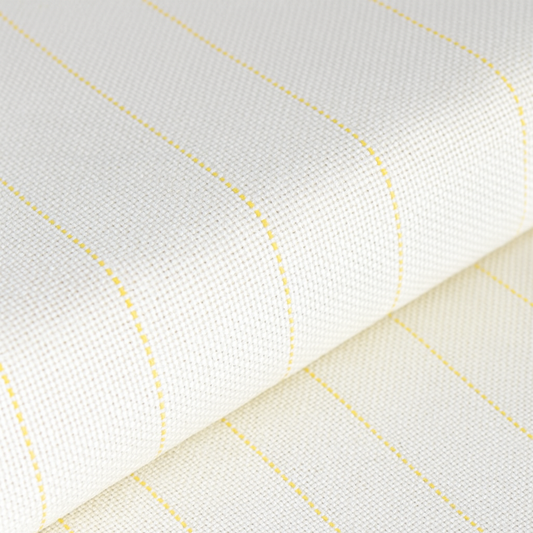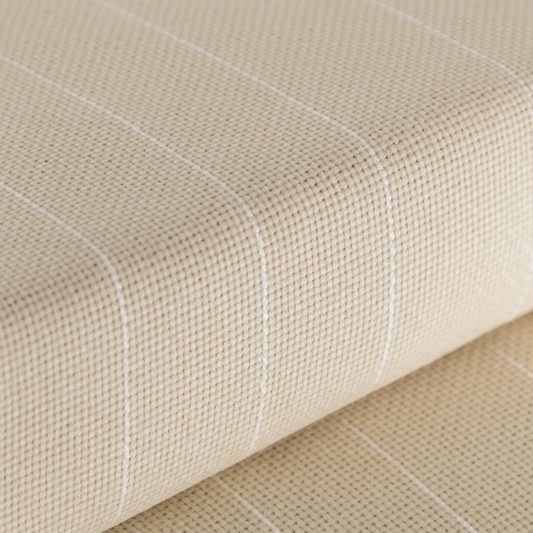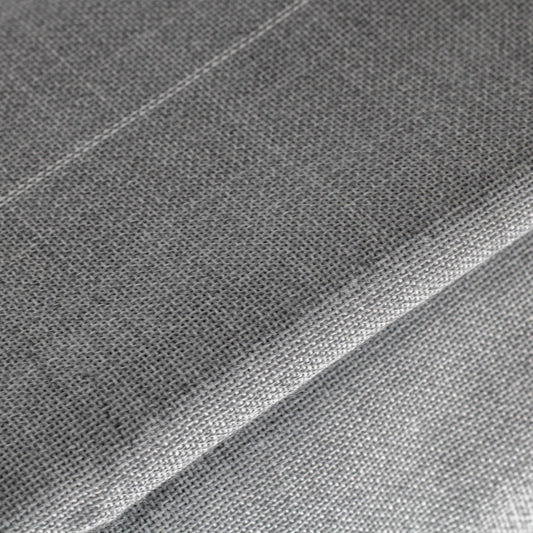- Collection
- قماش primary backing
-
قماش توفتينج من البوليستر - القطن مع خط أصفر
السعر العادي من 25,00€ EURالسعر العاديسعر الوحدة / لكل -
قماش توفتينغ 100% قطن مع خط أبيض 1x4 متر
السعر العادي 35,95€ EURالسعر العاديسعر الوحدة / لكل -
قماش بوليستر رمادي للتطريز مع خط أبيض 1x4 متر
السعر العادي 29,80€ EURالسعر العاديسعر الوحدة / لكل -
قماش مونكس من القطن 100% 1x1.5 متر
السعر العادي 16,95€ EURالسعر العاديسعر الوحدة / لكل -
قماش توفتينج من البوليستر والقطن مع خط أصفر – حزمة قيمة 4م
السعر العادي 85,00€ EURالسعر العاديسعر الوحدة / لكل100,00€ EURسعر التخفيض 85,00€ EURتخفيض -
قماش توفتينغ من القطن 100% مع خط أبيض – حزمة قيمة 4م
السعر العادي 120,23€ EURالسعر العاديسعر الوحدة / لكل143,80€ EURسعر التخفيض 120,23€ EURتخفيض -
قماش توفتينج بوليستر رمادي مع خط أبيض – حزمة قيمة 4م
السعر العادي 101,32€ EURالسعر العاديسعر الوحدة / لكل119,20€ EURسعر التخفيض 101,32€ EURتخفيض
مجموعة: قماش Primary Backing
قماش Premium Primary Backing – الأساس لكل سجادة عالية الجودة
قماش primary backing الخاص بنا مصمم خصيصًا للاستخدام مع مسدسات التوفينغ ويوفر الأساس المثالي للسجاد المربوط يدويًا واللوحات الجدارية. بفضل هيكله المحبوك بإحكام ولكنه مرن، يسمح هذا القماش باختراق الإبرة بسلاسة، وتقليل التآكل، وتثبيت الخيوط بشكل آمن — موثوق به من قبل المبتدئين وصانعي السجاد المحترفين.
لماذا تختار هذا Backing؟
على عكس الأقمشة العامة مثل قماش الراهب أو الخيش، فإن هذه القماش المصنوعة من البوليستر مصممة لتحمل سرعة وضغط مسدسات التوفينغ الكهربائية مثل AK-1 وAK-2. الشبكة المتوازنة تمنع سحب الخيوط وتدعم الخطوط النظيفة والمنحنيات والتصاميم التفصيلية دون تشويه.
مناسب لجميع أنماط التوفينغ
هذا backing يدعم تقنيات القطع واللف ويعمل مع مجموعة واسعة من خيوط السجاد، بما في ذلك الصوف والأكريليك والألياف الممزوجة. سواء كنت تصنع قطعة فنية صغيرة أو سجادة كاملة الحجم، يحافظ القماش على توتر متساوٍ دون تمدد أو تمزق.
نصائح للحصول على أفضل النتائج
قم بشد القماش بإحكام على إطار التوفينغ الخاص بك واترك على الأقل 10 سم (4 بوصات) من الهامش الإضافي حول تصميمك للتدبيس والتشطيب. بعد التوفينغ، lock الغرز باستخدام لاصق السجاد أو اللاتكس وأنهِ بتركيب backing ثانوي للحصول على نتيجة احترافية.
أكمل إعدادك باستخدام مسدسات التوفينغ وخيوط التوفينغ وإكسسوارات التوفينغ الخاصة بنا.
هل أنت جديد في عالم التوفينغ؟ يمكنك التعرف على المزيد حول تقنيات التوفينغ هنا أيضًا.
Primary Backing Canvas for Tufting Rugs
Our primary backing canvas is engineered for smooth tufting, clean pile formation, and long-lasting rugs. The tightly woven polyester base provides consistent tension and excellent tufting gun grip, reducing yarn pull-through and skipping while you work.
Why Choose This Backing?
- Tufting-friendly weave: Optimized grid for steady needle penetration and secure loop/ cut pile.
- Stable & durable: Low stretch for even tension on frames—ideal for beginners and pros.
- Clean edges: Frays less than loose weaves, making stapling and trimming easier.
- Consistent results: Supports both AK-1/AK-II style tufting guns and manual punch-needle work.
Recommended Uses
Perfect for tufted rugs, wall hangings, seat pads, and decorative panels. Works with acrylic, wool, and mixed-fiber tufting yarn. Pair with a tufting frame, non-slip grippers, and quality adhesive for best results.
How to Choose Size
- Measure your design (width × height) and add 10–15 cm (4–6 in) margin on each side for stapling.
- Pick the nearest pre-cut size or choose larger and trim after finishing.
- For multiple small projects, select a larger piece to maximize yield and reduce waste.
Tips for Best Results
- Stretch evenly: Staple the canvas on all four sides, working opposite edges to keep tension uniform.
- Finish properly: Apply a rug adhesive/latex to the back, let it cure fully, then add secondary backing or felt.
Care & Handling
Store rolled, in a dry area away from direct sunlight. Avoid sharp creases; if folding is required, unfold and tension on a frame before tufting to relax the fibers.
Frequently Asked Questions
Is this the same as monk’s cloth?
No. Monk’s cloth is typically cotton with a looser weave. This polyester primary backing has a tighter, more stable grid specifically designed for powered tufting guns and consistent pile density.
Which pile type does it support—loop or cut?
Both. You can achieve loop or cut pile (or mixed) with the appropriate tufting gun and settings. The backing holds loops securely and resists excessive tearing when switching to cut pile.
What yarn works best?
Most rug-grade yarns (wool, acrylic, blends) perform well. Choose a yarn weight that matches your gun’s needle size and adjust tension for smooth feed and firm anchoring.
How much extra margin should I buy?
Add at least 10–15 cm (4–6 in) per side for stapling and trimming. Larger rugs or tighter frames may benefit from even more margin.








